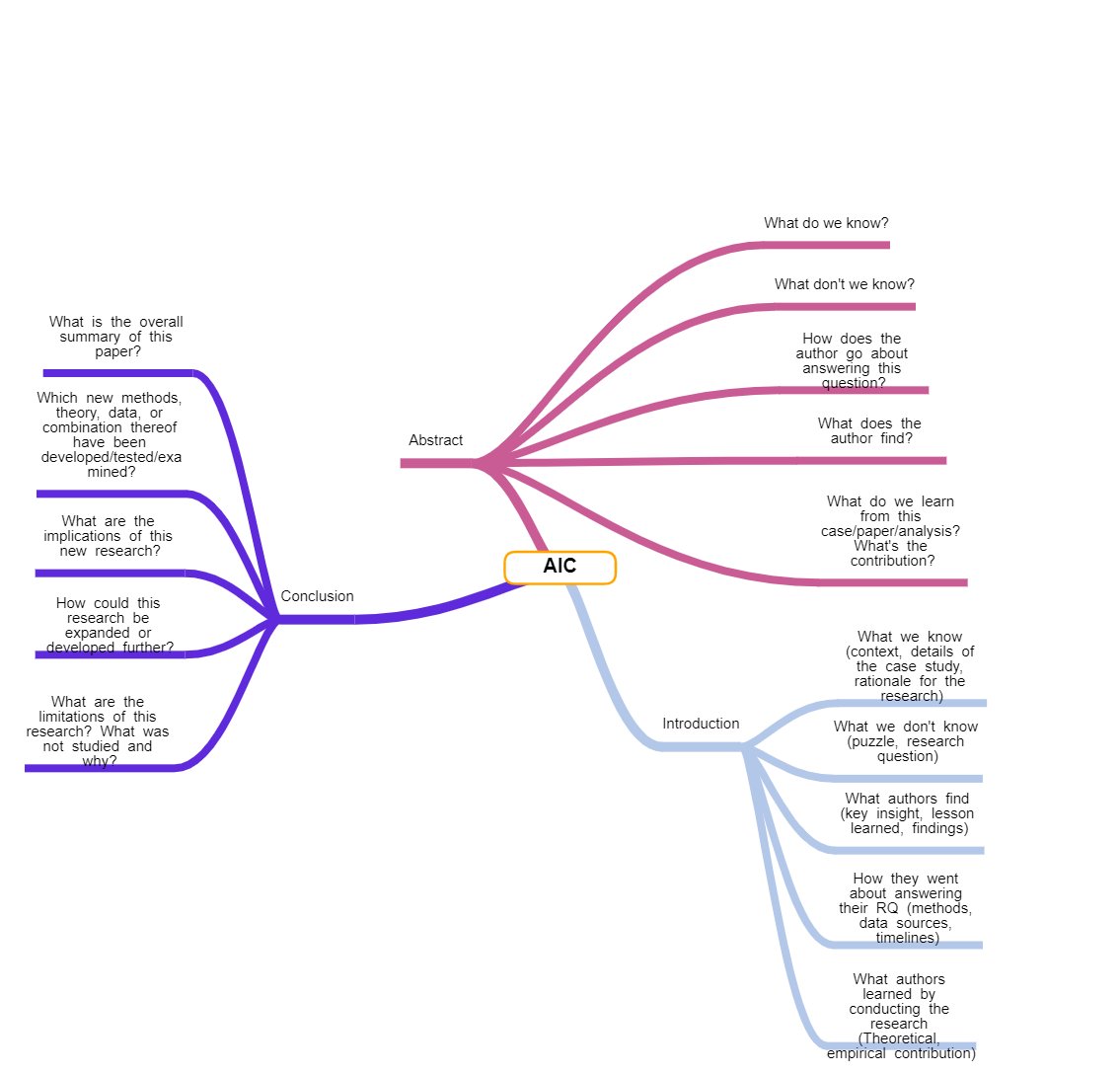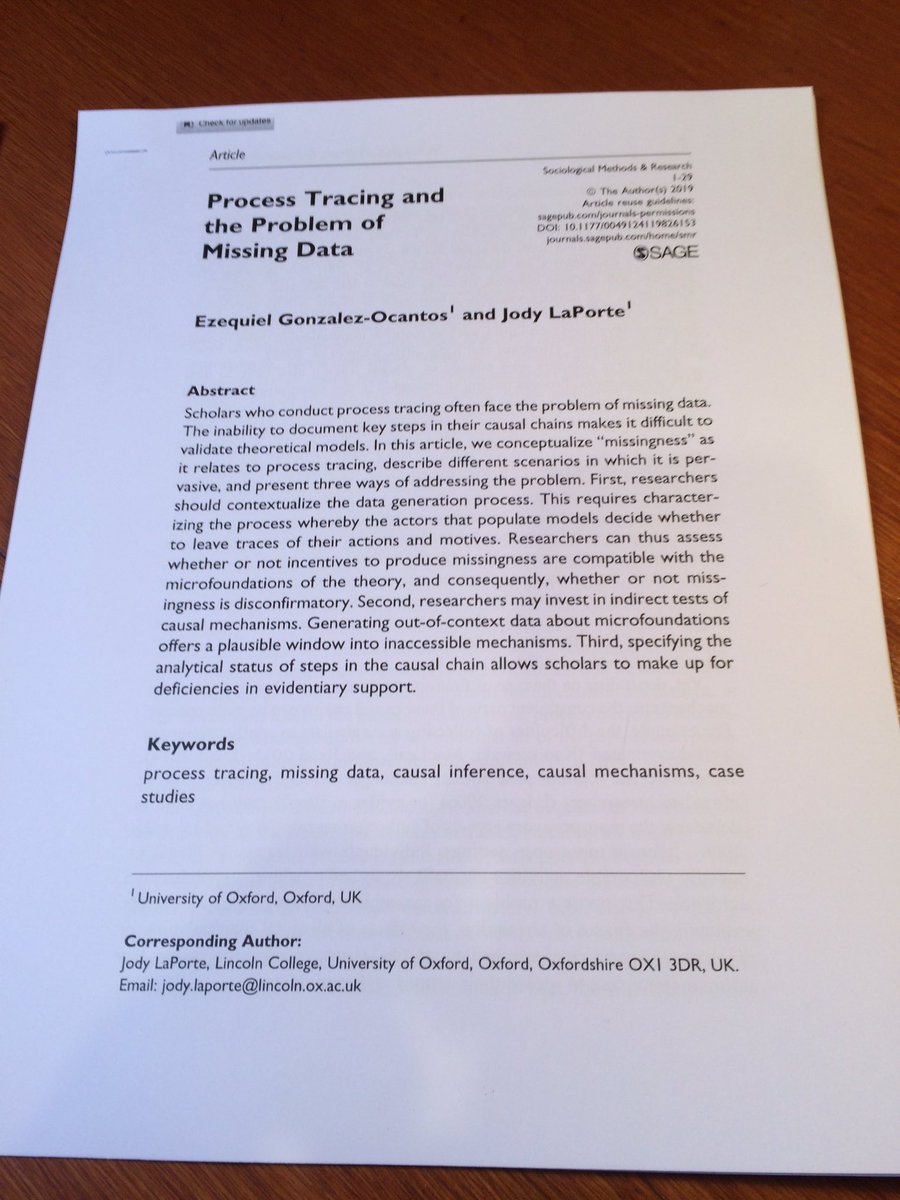
THREAD: On a strategy to skim articles (for undergraduates).
Several fellow professors (@drheather_smith @EJMcCann among others) have told me that they find my Reading Strategies resource page slightly advanced for undergraduates. This might be the case (and may apply to ESL)
Several fellow professors (@drheather_smith @EJMcCann among others) have told me that they find my Reading Strategies resource page slightly advanced for undergraduates. This might be the case (and may apply to ESL)
Here is my Reading Strategies page raulpacheco.org/resources/read…
The above said, I DO have a page with Reading Strategies that is specific for Undergraduate Students (see here - raulpacheco.org/resources/reso…)
The above said, I DO have a page with Reading Strategies that is specific for Undergraduate Students (see here - raulpacheco.org/resources/reso…)
When I teach how to read (whether it is to my own undergrad and grad students, or to my research assistants), I always recommend (undergrad or grad) doing a quick skim, THEN a second round.
I call this quick overview AIC (Abstract, Intro, Conclusion) raulpacheco.org/2017/01/findin…
I call this quick overview AIC (Abstract, Intro, Conclusion) raulpacheco.org/2017/01/findin…
Dr. Smith asked me recently whether I had a template for undergraduates where they could combine my AIC strategy with maybe the Rhetorical Precis raulpacheco.org/2016/10/using-…
It occurred to me that we need to provide a template with questions pointing to what to look for in a paper.
It occurred to me that we need to provide a template with questions pointing to what to look for in a paper.
There's another element that needs to be discussed that I've been mulling for months now.
We need different strategies to read, annotate, take notes, and synthesize different materials.
We assign very different types of reading materials (books, articles and book chapters).
We need different strategies to read, annotate, take notes, and synthesize different materials.
We assign very different types of reading materials (books, articles and book chapters).
The article I read this morning is an empirical article. It looks at one particular case study of a social movement (fighting HIV/AIDS in Brazil)
https://twitter.com/LARRLASA/status/1307021570217402370?s=20
Empirical articles usually have abstracts that have a 5-7 sentences structure as I describe in my blog. raulpacheco.org/2018/07/how-to…
Any template that seeks to help students how to decompose what they are looking for in a paper needs to focus on helping find those 5 - 7 elements.
Any template that seeks to help students how to decompose what they are looking for in a paper needs to focus on helping find those 5 - 7 elements.
I'm not the only one who has ever wondered how to help undergrads read. I point to several resources here
1) Dr. Amelia @HooverGreen has developed a nifty guide for how to read in political science ameliahoovergreen.com/uploads/9/3/0/…
2) Dr. @Victor_Asal uses this
1) Dr. Amelia @HooverGreen has developed a nifty guide for how to read in political science ameliahoovergreen.com/uploads/9/3/0/…
2) Dr. @Victor_Asal uses this
https://twitter.com/Victor_Asal/status/1163429284058423298
Now, the way I see this template working is: I need a structure that helps undergraduate (and graduate) students DECOMPOSE the structure of what they read (Abstract, Intro, Conclusion) in a way that helps them absorb the material quickly.
Here's the "Abstract" section.
Here's the "Abstract" section.

This is my first stab at Dr. Rich’s LARR article’s abstract. She uses a somewhat refined version of the 5-7 sentences model for her abstract, but I (and my students) can draw all elements anyway. 

You can see how I went through the Abstract and responded all 5 questions drawing from Rich’s article. To avoid plagiarism I add a column with Direct Quotations (and, like anybody else, I also wrongly wrote some stuff that wasn’t a direct quote in the wrong column LOL) 

As I went through my template and Rich's abstract, I realized that there are elements in the abstract that give the reader much more information about the context of the research, why she studied those social movements, etc.
This has two implications that I want to draw here:
This has two implications that I want to draw here:
1) As @HooverGreen indicates in her guide, we need to teach students to look at "signpost" - words that give them a clue about what they are reading.
In the sentence: "I show how X phenomenon occurs", the phrase "I show" does the work of signposting what the author is doing.
In the sentence: "I show how X phenomenon occurs", the phrase "I show" does the work of signposting what the author is doing.
2) As Dr. @JessicaCalarco does this post jessicacalarco.com/tips-tricks/20… we need to read looking for meaning (and as faculty, we need to teach how to read looking for that meaning, for those signposts).
Because there is no unified writing approach, and we all write differently...
Because there is no unified writing approach, and we all write differently...
... we STILL need to teach HOW TO READ (and how to absorb what we read and make sense of it). From the Abstract, I can make sense of a lot about Rich's article: it's on hybrid social movements, looks at Brazil's AIDS movements and develops a third way of looking at SM: federated.
HOWEVER... so far, from reading Rich's abstract I know nothing about her methods, approach to how she conducted this study of federative coalitions, etc. THIS is precisely the reason why I always tell my students to do a quick AIC skim: there are details that escape the abstract.
That's why now we need to move on to reading this article's Introduction.
Here is a quick template/framework for the kinds of questions that we should ask ourselves when reading introductions (based off my blog post on how to write introductions raulpacheco.org/2018/02/how-to…)
Here is a quick template/framework for the kinds of questions that we should ask ourselves when reading introductions (based off my blog post on how to write introductions raulpacheco.org/2018/02/how-to…)

This is a quick template/framework with some questions that we (or our students) should ask ourselves when reading Conclusions.
My post on how to write the conclusion for a research paper might help too. raulpacheco.org/2018/08/how-to…
My post on how to write the conclusion for a research paper might help too. raulpacheco.org/2018/08/how-to…

Once we put everything together, it becomes clear that running a quick AIC skim involves asking several questions for each component (Abstract, Introduction, Conclusion). With practice (I read at least one article per day), this process becomes much faster raulpacheco.org/2017/12/carvin… 

I created a full template for creating a Synthetic Note based on an AIC quick skim. Includes:
1) Guidance on readings that students should do beforehand so they understand what AIC is all about.
2) A series of questions for each one of the components of AIC
3) A template.
1) Guidance on readings that students should do beforehand so they understand what AIC is all about.
2) A series of questions for each one of the components of AIC
3) A template.
The template includes suggested wording that can be adjusted.
4) An example of what I got after applying my guiding questions to a real life example (an empirical paper).
dropbox.com/s/icxbrtv7xg75…
An example of how I used the guiding questions for each one element (AIC) is...
4) An example of what I got after applying my guiding questions to a real life example (an empirical paper).
dropbox.com/s/icxbrtv7xg75…
An example of how I used the guiding questions for each one element (AIC) is...
... still in the works. I created the Synthetic Note after running my reading through each element but that is not fully reflected (that is, there is an intermediate step where I should show each one of the tables with my own notes).
Hope this is helpful!
Hope this is helpful!
Here's the template and an application with the paper I was highlighting and annotating.
And a sampler of how I filled out the tables to help me draw the most relevant information out of all three components of AIC (Abstract is the only one shown in this screen capture).


And a sampler of how I filled out the tables to help me draw the most relevant information out of all three components of AIC (Abstract is the only one shown in this screen capture).



• • •
Missing some Tweet in this thread? You can try to
force a refresh

















